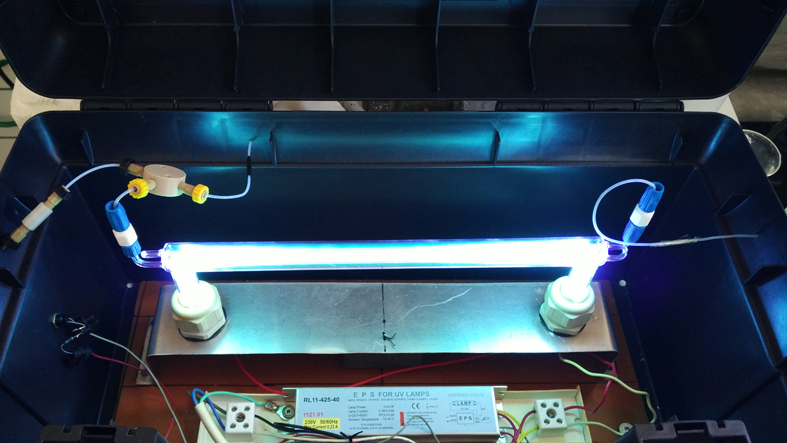Research
PHOTOCHEMICAL GENERATION OF VOLATILE SPECIES – EXPLORING ALTERNATIVE ROUTES TO GENERATION OF VOLATILE SPECIES
Photochemical generation of volatile species (VSG) has been emerging as an alternative to chemical VSG, offering similar benefits such as the separation of the analyte from the matrix and higher introduction efficiency than that of pneumatic nebulization. Compared to chemical VSG, it is seems to be applicable to a broader range of elements, including typical hydride-forming elements, mercury, transition metals and even nonmetals such as F, Cl, Br and I. A volatile species is produced by UV irradiation of the liquid phase containing the analyte in the presence of a photochemical agent (in most cases low molar mass organic acids such as formic and acetic acid, but in some cases even alcohols, aldehydes or nitric acid). This produces reducing radical species (H•, R• and COO•-) and aquated electrons (eaq-) that subsequently react with the analyte to produce volatile species - hydrides, carbonyls, alkylated species or oxides - depending on the analyte and the photochemical agent used.
OUR RESEARCH ACTIVITIES IN THIS FIELD:
In the field of photochemical VSG, we are especially interested in transition metals as described in paragraph Chemical generation of volatile species – focused on new analytes with the main aim to expand applicability of photochemical VSG to new analytes.

We gained important knowledge with photochemical VSG of Se when our group focused on determination of VSG efficiency by means of 75Se radioactive indicator [1]. Subsequently, we achieved highly efficient photochemical PVG of molybdenum (more than 50%) as the first ever [2], which was accomplished in a 19 W flow-through photoreactor (see Fig. 1) using formic acid as a reaction medium and with ICP-MS as the detector.The efficiency could be further enhanced by the presence of mg l–1 Fe3+ ions. It was assumed that the generated volatile species was Mo(CO)6 due to its high stability and similar chemistry to the photochemical VSG of carbonyls identified for Ni, Fe and Co. In addition to verification the accuracy and feasibility by the analysis of real samples and certified reference materials, we even proposed the mechanism of generation.
It was quickly followed up by a paper on photochemical VSG of tungsten [3]. However, to achieve photochemical VSG of W was not as “easy and straightforward” as for photochemical VSG of Mo. The addition of Cd2+ ions as a sensitizer at at hundreds of mg l–1 was found crucial to initiate the photochemical reaction, nevertheless the mechanism of its action remained unanswered despite a significant investigative effort. After optimization we verified the accuracy and feasibility of this methodology by the analysis of water samples and certified reference material. The achieved limit of detection below 1 ng l–1 with ICP-MS as the detector was found amazing.
Very recently, we also participated in the research devoted to photochemical VSG of Cd [4], which was a challenging task with respect to hitherto published papers on this topic. Photochemical VSG was conducted using a 6 W low pressure Hg lamp, with a coiled quartz reactor and commercial AFS as the detector. Volatile species of Cd were reproducibly generated from a formic acid based medium with the addition of Fe2+ ions, which enhanced the VSG efficiency some 2.6-fold. Further improvement could be achieved by increasing the pH of the medium to 2.7 and through the addition of Triton X-100 downstream of the photoreactor. The VSG efficiency was determined at our laboratory from a comparison of the response to direct solution nebulization coupled to ICP-MS, to be 5.5%.
RELATED PAPERS:
- [1] RYBÍNOVÁ M., MUSIL S., ČERVENÝ V., VOBECKÝ M., RYCHLOVSKÝ P.: UV-photochemical vapor generation of selenium for atomic absorption spectrometry: Optimization and 75Se radiotracer efficiency study. Spectrochimica Acta Part B: Atomic Spectroscopy, 123 (2016), 134–142.
- [2] ŠOUKAL J., STURGEON R. E., MUSIL S.: Efficient Photochemical Vapor Generation of Molybdenum for ICPMS detection. Analytical Chemistry, 90 (2018), 11688–11695.
- [3] VYHNANOVSKÝ J., STURGEON R. E., MUSIL S.: Cadmium Assisted Photochemical Vapor Generation of Tungsten for Detection by Inductively Coupled Plasma Mass Spectrometry. Analytical Chemistry, 91 (2019), 13306–13312.
- [4] NOVÁKOVÁ E., HOROVÁ K., ČERVENÝ V., HRANÍČEK J., MUSIL S.: UV photochemical vapor generation of Cd from formic acid based medium: optimization, efficiency and interferences. Journal of Analytical Atomic Spectrometry, 35 (2020), 1380–1388.


